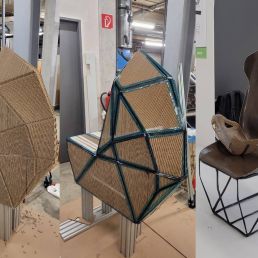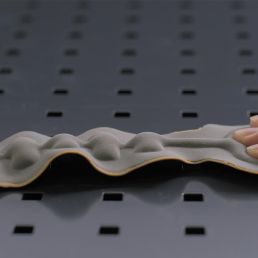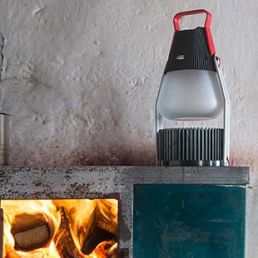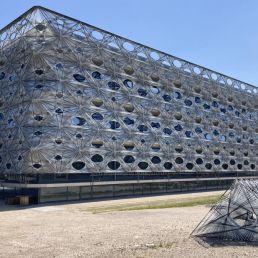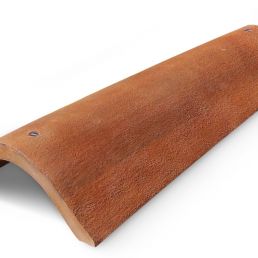Full of hot Air
Metal foam structures due to sintering technology
form 229
November/December 2009
publisher
Birkhäuser (Basel)
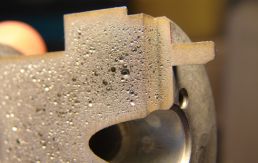
For several years metal foams have provided designers and architects with inspiration for new applications in the lighting and interior segments – but to date the materials have stopped short of becoming a huge success because production costs were too high. All that is now set to change.
Open-pore foam structures
Since last October Hollomet has been using a new plant technology that slashes costs, and this will increase interest in metal foams, which have hitherto been cost-intensive.
The principle of making foams from metals was discovered some 30 years ago. Their great advantage: they offer an excellent relationship between rigidity and mass. Depending on the type and the structure, metal foams consist to 80 to 90 percent of air. In addition to high stiffness they also demonstrate good damping qualities and have sound and heat absorbing properties.
In the last decades metal foam structures were employed primarily in vehicle construction for truck superstructures, convertibles or tram cars thanks to the fact that they delivered the right combination of low weight and high stiffness. Moreover, their excellent absorbent properties made them suitable for crash protection.
Alongside their striking aesthetic qualities (especially in combination with light), metal foam structures also offer air-cleaning and noise-absorbing properties. While previously aluminum (e. g., Alulight) was largely used to manufacture foam structures, today foam structures can be produced using almost any metal.
A distinction is made between closed and open-pore foam structures. While closed-pore foams (e. g., aluminum foams by Gleich, zinc compression foams by Zincopor) are made using propellants, open-pore structures are often achieved by casting (M-Pore) or sintering (Hollomet).
In the sinter technology process chain, a plastic foam is first coated with a powder metal binder suspension and then the foam is debonded at 300° C, and finally the metal is sintered. Depending on the density, what remains is a porous metal foam structure – with much finer structures than could be achieved using casting.
Moreover, the geometry of the plastic foams can be selected before the sintering process and the foam structures can be made from various metals (e. g., iron, stainless steels, silver or gold).
www.hollomet.com
www.altec-alu.de
www.gleich.de
www.zincopor.de
image source: Zincopor
Ecoblaq molecular wood colours
23 March 2024
Ecoblaq is a molecule manipulation method, a natural chemical reaction, making…
Natural fiber reinforced car seat
22 October 2023
The focus of the project "Design for Recycling" is a seat shell that is made…
MotorSkins morphing textiles
19 April 2022
Berlin based start-up MotorSkins designs and produces textiles with embedded…
3D Pioneers Challenge 2022
15 December 2021
The 3D Pioneers Challenge 2022 adresses tech pioneers who pave the way for…
IGNIS – Light from waste heat energy
12 August 2020
The availability of affordable, independent and, above all, clean electrical…
Brake disc with reduced fine dust
21 April 2021
Fine dust endangers our health. One of the main sources is traffic, especially…
Texoversum
15 July 2023
With the "Texoversum", Reutlingen University has put into operation a training…
Invisible Terracotta Solar Rooftile
10 May 2023
The family-run business Dyaqua has developed a technology to integrate a…
Xarvio – Digital Farming
8 January 2021
BASF Digital Farming GmbH has received the renowned Crop Science Award for the…

